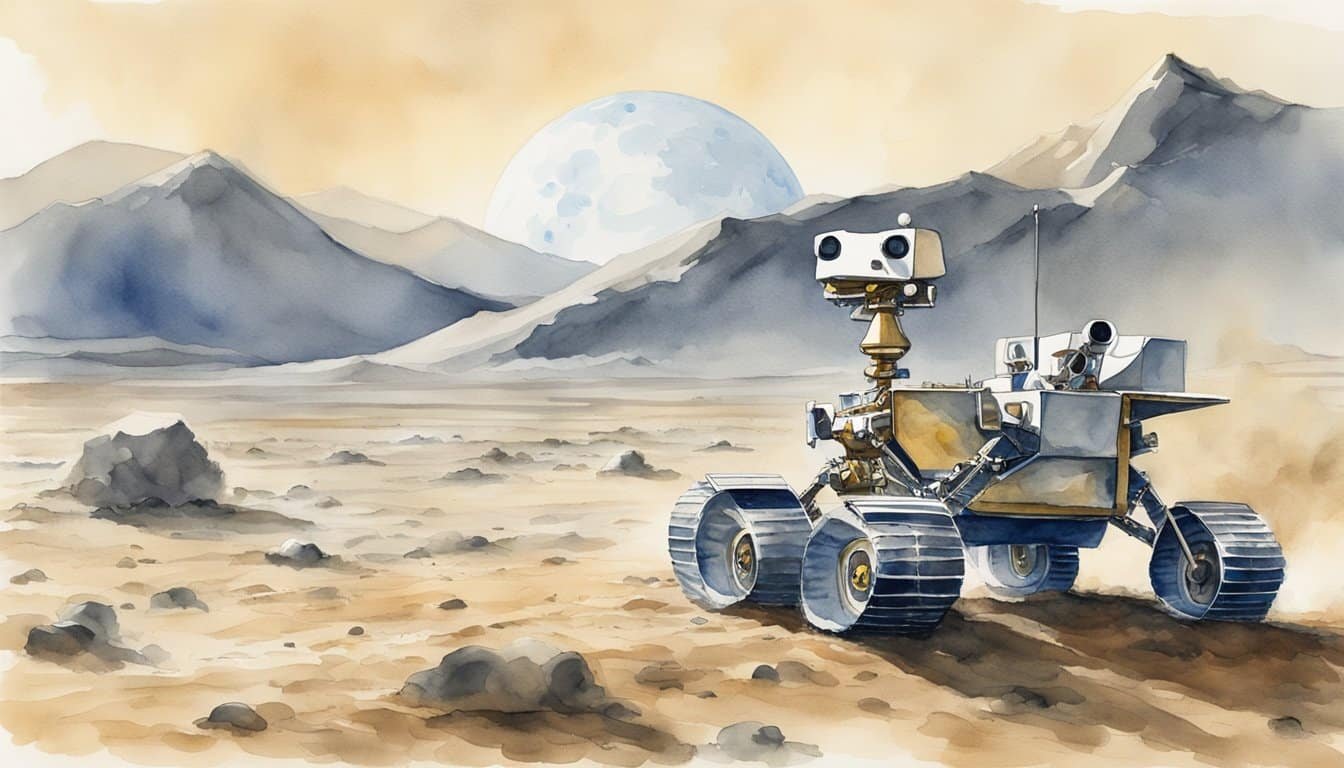Overview of China’s Moon Landings
China’s foray into lunar exploration has marked significant milestones, achieving feats that have added new chapters to the annals of space history.
Historic Significance
The lunar exploration journey of China began with the Chang’e-1 probe, launched in 2007, a major step for the Chinese National Space Administration (CNSA) in its pursuit of space knowledge. However, the pinnacle of this journey was the Chang’e-4 mission which, in January 2019, made the historic first landing on the far side of the Moon. This achievement placed China in an elite category, showcasing their advanced capabilities in space exploration. It also underscored the nation’s growing role in the field, rivalling historic participants like the United States, Russia, and the legacy of the Soviet Union’s pioneering efforts.
Chang’e Missions Overview
China has been diligently expanding its lunar exploration program through a series of missions named after the mythical Chinese moon goddess, Chang’e. The Chang’e-3 mission advanced China’s lunar ambitions with a soft landing on the Moon’s surface. The follow-up mission, Chang’e-5, aimed to build upon this success by returning lunar samples to Earth for the first time since the 1970s, a goal it achieved in December 2020. These missions have cemented China’s standing in the international space community and have served as a prelude to more complex endeavors, potentially including manned lunar landings by the 2030s.
International Context
China’s moon landings fit into a larger international context of space exploration, where nations vie for scientific milestones and strategic advantage. While NASA continues to push the boundaries with projects like the Artemis program, aiming to return humans to the lunar surface, China is making significant strides. The success of CNSA’s missions not only fuels the country’s space race ambitions but also positions China as a formidable competitor on the global stage, particularly with its sights set on future Mars exploration. This reinvigoration of lunar interest harkens back to the excitement of the original space race and opens the door for potential international collaborations or competitions in the new era of extraterrestrial exploration.
Technical Aspects of Lunar Exploration

China’s advancements in space technology have paved the way for their ambitious lunar exploration missions. These missions, spearheaded by the Chinese space program, are characterized by sophisticated designs of spacecraft, comprehensive scientific objectives, and efficient lunar surface operations.
Spacecraft and Lander Design
The physical structure of the Chang’e probes exemplifies the high-level engineering involved in constructing a spacecraft capable of withstanding the harsh conditions of space and the lunar environment. The design includes robust thermal control systems to manage extreme temperatures and a propulsion system that allows for precise maneuvers, such as entering lunar orbit and executing a soft landing. The Chang’e landers, equipped with retractable solar panels and communication devices, enable long-term missions on the lunar surface and maintain contact with Earth.
Scientific Instruments and Objectives
China’s lunar missions carry an array of scientific instruments to achieve their research goals. These include spectrometers for analyzing lunar rocks and soil, and radar for probing beneath the lunar surface. The missions aim to understand the mineral composition of the moon and to assess the potential presence of water ice. Instruments like cameras and spectrometers on the rover are utilized for examination of lunar samples, ranging from regolith to rocks, contributing valuable data to our understanding of the moon’s history and geology.
Lunar Surface Operations
Once on the moon, the Chang’e rover carries out complex operations. The rover, capable of navigating rugged terrain such as craters and mons Rümker, collects lunar samples using a scoop and even drills into the lunar soil to study its structure and composition. Data from these operations are sent back to Earth, providing insights that were beyond reach even to the Apollo astronauts. This information can potentially aid in planning future crewed lunar landings, as landing sites can be selected with more precision thanks to the detailed surveys conducted by the rover.
How Does China’s Moon Landing Compare to the Achievements of Chandrayaan-3?
China’s recent moon landing marks a significant milestone in space exploration, showcasing advanced technology and ambition. In contrast, chandrayaan3’s groundbreaking lunar discoveries highlight India’s innovative approach, providing valuable insights into the lunar surface and its resources. Together, these achievements underscore the exciting advancements in global space exploration initiatives.
Societal and Cultural Impact

China’s foray into lunar exploration has captivated the globe, setting the stage for a new era in space and society. This section explores the significant influence that these missions have on media engagement and the grand visions for future endeavors.
Media Coverage and Public Interest
China’s Chang’e-4 probe made history by landing on the far side of the moon, a feat that sparked widespread media coverage and bolstered public interest in space exploration. Accounts from CNN and other news outlets have detailed the mission, garnering widespread attention and enthusiasm for the scientific community. The milestone marked by the Chang’e-4, as the first probe to communicate from the moon’s far side, piqued the interest of countless individuals, offering a glimpse into space’s untapped potential.
- Noteworthy Details:
- Astronaut training programs have seen increased interest.
- Publications of scientific articles and discussions around the mission have surged.
Future Moon Missions and Goals
Looking ahead, China’s ambitious plans include establishing a research station on the moon and furthering the country’s prominence in space exploration. The China National Space Administration (CNSA) has articulated its goals to be a leading force in lunar exploration. Upcoming missions are expected to reinforce the strategic and scientific significance of lunar expeditions and underscore the advancements in technology that render these missions possible.
- Upcoming Milestones:
- Launch of missions aimed at exploring the moon’s resources.
- Expansion of global collaboration in space exploration initiatives.
The strides made by these historic missions not only underscore the prowess of human ingenuity but also lay the groundwork for the boundless possibilities that lunar expeditions present for future generations.

